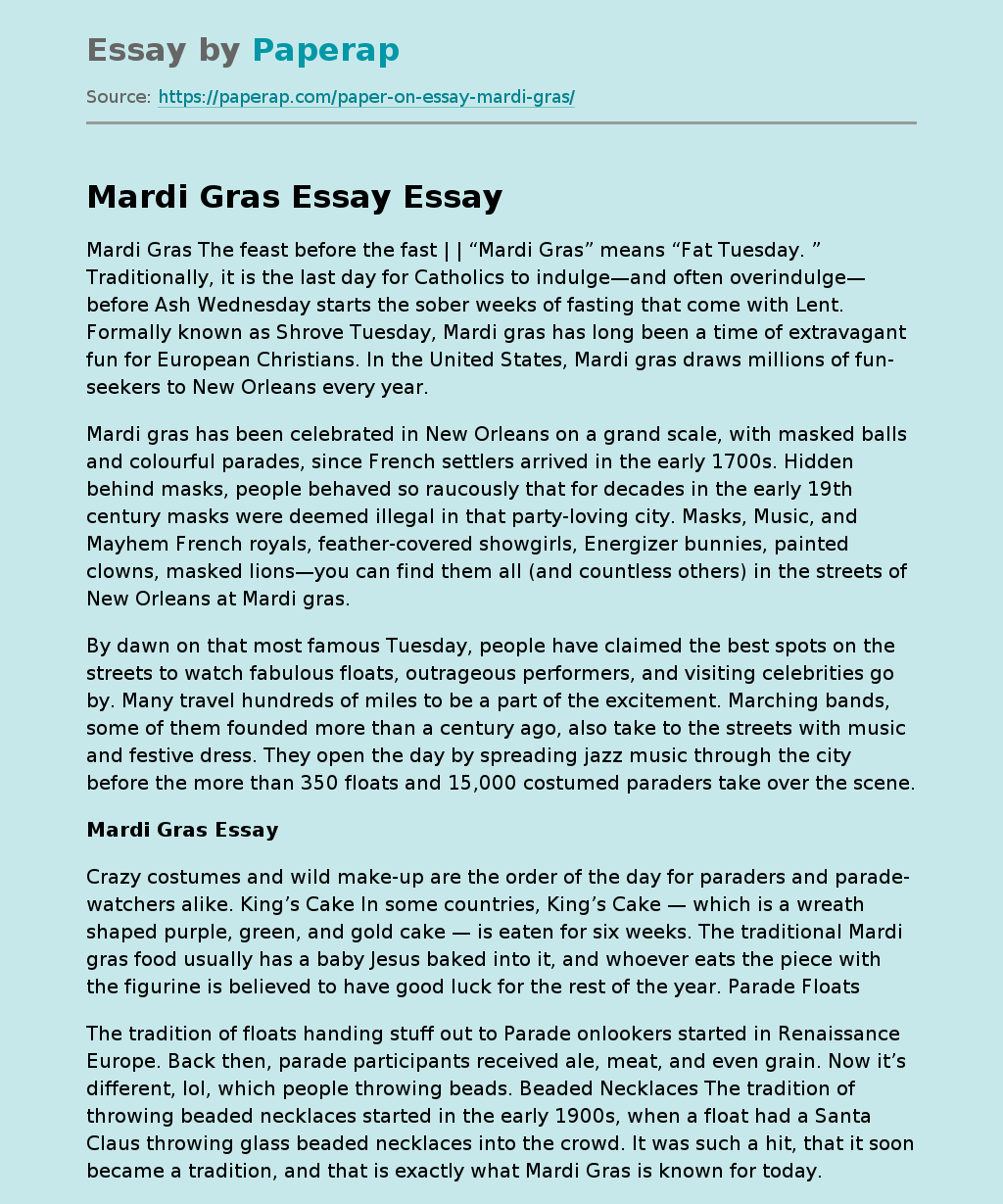Mardi Gras Essay
Mardi Gras The feast before the fast | | “Mardi Gras” means “Fat Tuesday. ” Traditionally, it is the last day for Catholics to indulge—and often overindulge—before Ash Wednesday starts the sober weeks of fasting that come with Lent. Formally known as Shrove Tuesday, Mardi gras has long been a time of extravagant fun for European Christians. In the United States, Mardi gras draws millions of fun-seekers to New Orleans every year.
Mardi gras has been celebrated in New Orleans on a grand scale, with masked balls and colourful parades, since French settlers arrived in the early 1700s.
Hidden behind masks, people behaved so raucously that for decades in the early 19th century masks were deemed illegal in that party-loving city. Masks, Music, and Mayhem French royals, feather-covered showgirls, Energizer bunnies, painted clowns, masked lions—you can find them all (and countless others) in the streets of New Orleans at Mardi gras.
By dawn on that most famous Tuesday, people have claimed the best spots on the streets to watch fabulous floats, outrageous performers, and visiting celebrities go by.
Many travel hundreds of miles to be a part of the excitement. Marching bands, some of them founded more than a century ago, also take to the streets with music and festive dress. They open the day by spreading jazz music through the city before the more than 350 floats and 15,000 costumed paraders take over the scene.
Mardi Gras Essay
Crazy costumes and wild make-up are the order of the day for paraders and parade-watchers alike.
King’s Cake In some countries, King’s Cake — which is a wreath shaped purple, green, and gold cake — is eaten for six weeks. The traditional Mardi gras food usually has a baby Jesus baked into it, and whoever eats the piece with the figurine is believed to have good luck for the rest of the year. Parade Floats
The tradition of floats handing stuff out to Parade onlookers started in Renaissance Europe. Back then, parade participants received ale, meat, and even grain. Now it’s different, lol, which people throwing beads. Beaded Necklaces The tradition of throwing beaded necklaces started in the early 1900s, when a float had a Santa Claus throwing glass beaded necklaces into the crowd. It was such a hit, that it soon became a tradition, and that is exactly what Mardi Gras is known for today.
Mardi Gras Essay. (2019, Dec 05). Retrieved from https://paperap.com/paper-on-essay-mardi-gras/

